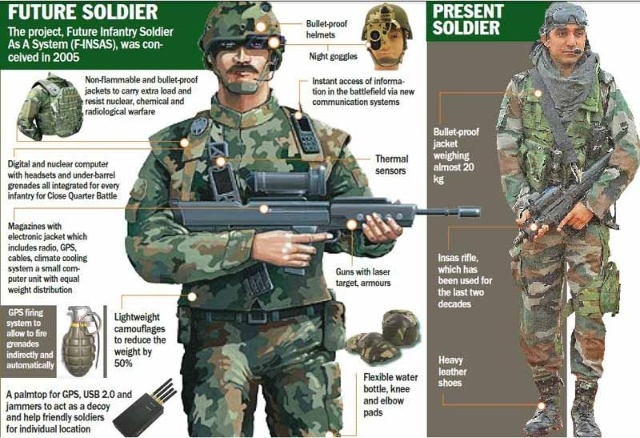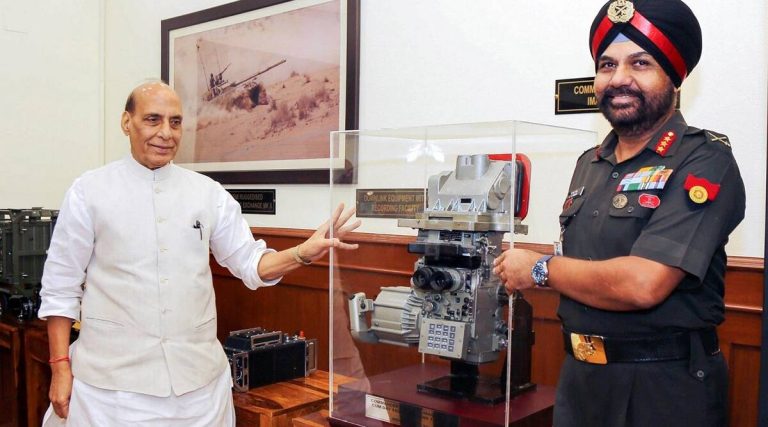The much-anticipated Future Infantry Soldier as a System (F-INSAS) was presented to the Indian Army by Defence Minister Rajnath Singh on Tuesday during an unveiling ceremony for a number of defence and strategic systems in Delhi.

The AK-203 assault rifle, which is a Russian-made gas-operated, magazine-fed, select-fire assault rifle, is a part of the F-complete INSAS’s arsenal. A joint venture between Russia and India will produce the weapon, which has a 300-meter range.
A ballistic helmet, ballistic goggles, bulletproof vest, elbow pads, and knee pads have all been included in the system to increase the infantry soldier’s chance of survival. Both the helmet and the vest offer defence against AK-47 assault weapons and 9 mm ammunition. A cutting-edge target acquisition and communication system is also part of F-INSAS.
Target acquisition is handled by a 200-meter-range rifle-mounted holographic sight. Infantry now have access to night vision equipment installed on their helmets. For communication with command posts and other battlefield components, a hands-free headset has been provided.
The F-INSAS project was conceptualised by the Defence Research and Development Organization (DRDO) in the early 2000s in accordance with the goals of the Army’s Infantry Soldier Modernization Programme to maximise the soldier’s performance across the course and duration of a military operation.
Similar infantry modernization programmes from the US, France, Germany, and Israel were reportedly evaluated for the development of F-INSAS, according to DRDO scientists. The Army established the project’s quality standards. According to a senior Army official, the F-INSAS is designed to prepare infantry soldiers for the network-centric battle scenarios of today. The effective use of information technology and computer networking tools to create networks of different force elements in use on the battlefield is known as network-centric warfare.
The Defence Minister also gave the Army, the Nipun anti-personnel mine during the unveiling ceremony on Tuesday. The DRDO and the corporate sector worked together to build these mines. Up to 7 lakhs of these mines would be produced by private sector companies. In the same ceremony, the military received a frequency hopping radio relay, a hand-held thermal imager, a thermal imaging sight for T-90 tanks, infantry protected mobility vehicles, and fast reaction fighting vehicles.
